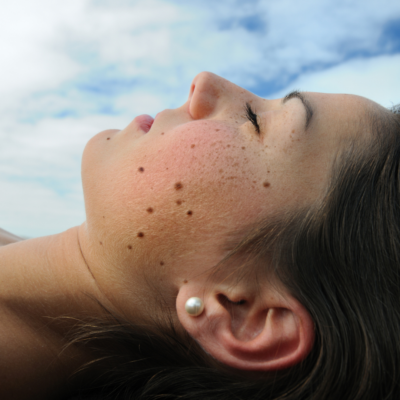ABCDEs of Skin Cancer
We all learned the ABCs as children. Now, as adults, it’s important to learn the ABCDEs of skin cancer. Why? Because 1 out of every 5 Americans is expected to develop skin cancer during their lifetime.
The most common skin cancers are basal cell carcinoma and squamous cell carcinoma, followed by melanoma and other types of skin cancers. Catching every type of skin cancer early and getting it treated before it metastasizes can make a life-or-death difference. When identified early, almost all skin cancers can be cured with treatment.
The ABCDEs of melanoma have been adapted by the American Academy of Dermatology as a standard guide to help everyone recognize when a growth on the skin may be starting to transition into cancer. The ABCDEs are now widely used to help people detect all types of skin cancer as soon as possible.
“ABCDE” stands for:
Asymmetry – One half of a mole is not like the other half
Border – An irregular or poorly defined border
Color – A mole should primarily be one shade, not multiple shades
Diameter – Moles larger than a pencil eraser (6 millimeters)
Evolution – Changes in size, color or shape to a mole or spot
Schedule an Annual Skin Check
While knowing the ABCDEs of skin cancer helps in conducting regular self-checks on your skin, it does not replace or reduce the importance of a skin cancer screening done by a board-certified dermatologist.
It often takes a trained medical eye to recognize a troublesome spot before it may become obvious to anyone else. Early detection allows for faster and less stressful treatment options. A dermatologist will also examine areas of your skin that you are unable to see, such as your scalp and the backs of your neck and shoulders. These areas may be especially vulnerable to skin cancer, due to sun exposure.
Those at the greatest risk for skin cancer should prioritize annual skin cancer screenings. This includes people who have:
- A large number of moles
- A family history of skin cancer
- Previous removal of atypical moles
- A personal history of unprotected sun exposure
Make an appointment with a California Skin Institute board-certified dermatologist.
Disclaimer
This is to be used only as an educational piece. Individuals should not use it to self-diagnose a skin condition or problem.




 / 291 Reviews
/ 291 Reviews